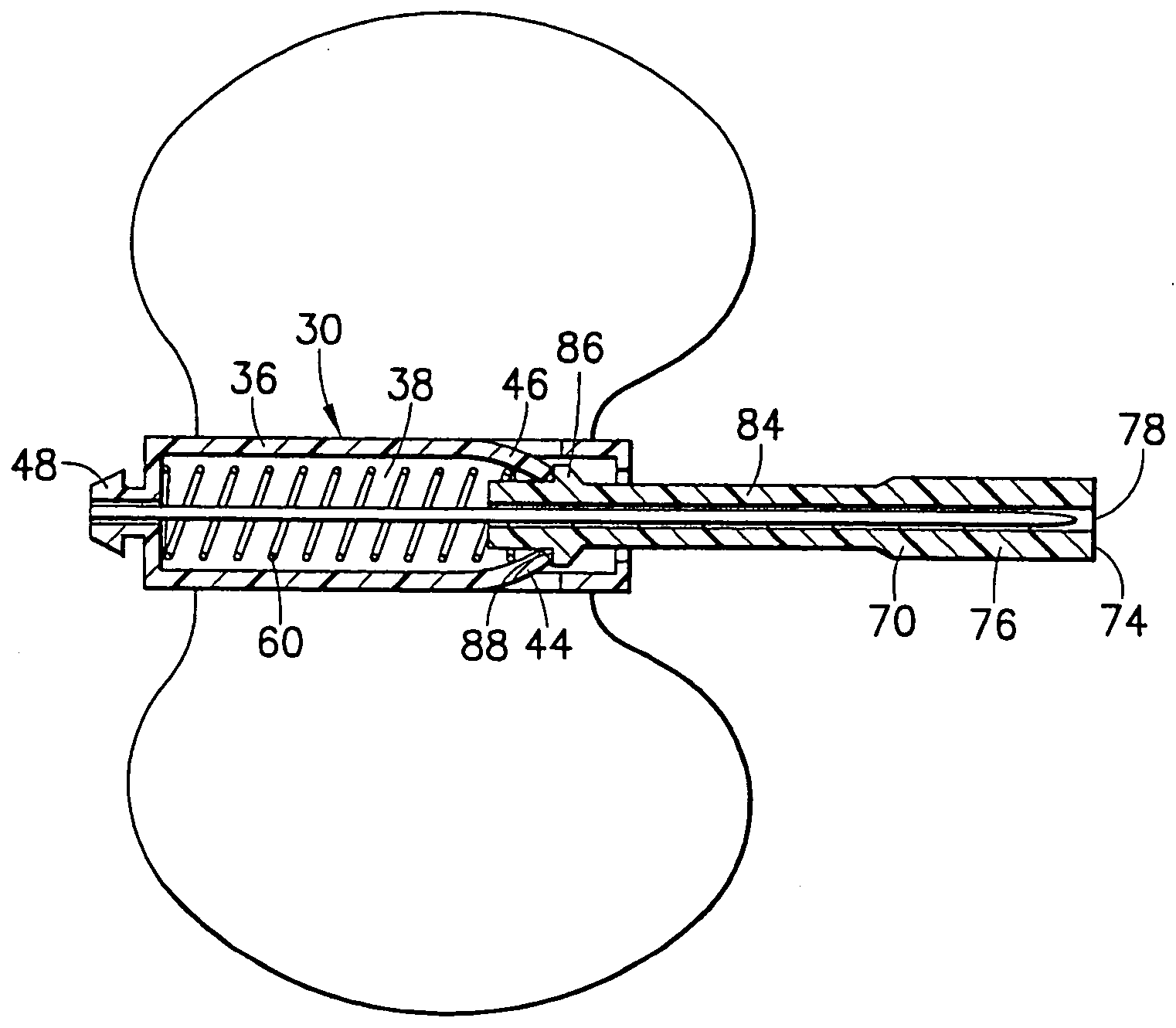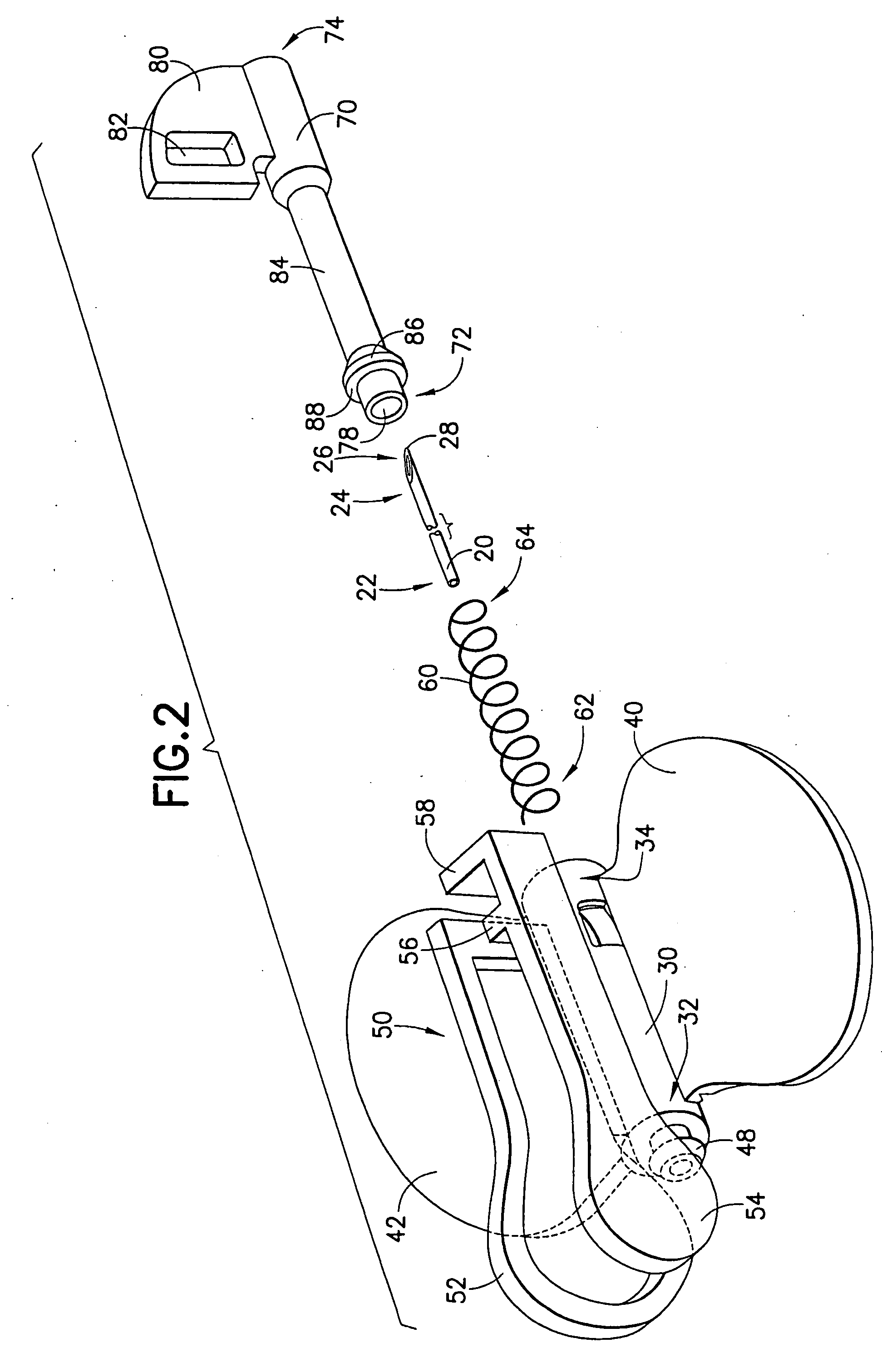Selectively passive forward shielding medical needle device
a forward shielding and needle device technology, applied in the field of medical devices, can solve the problems of undesirable partial or full retraction awkward release of the latching mechanism, and inability to maintain control of the needle cannula
- Summary
- Abstract
- Description
- Claims
- Application Information
AI Technical Summary
Benefits of technology
Problems solved by technology
Method used
Image
Examples
Embodiment Construction
[0029]FIGS. 1-10 generally illustrate a medical device according to the present invention. The medical device of the present invention generally includes a shieldable safety needle system adapted to enclose or surround a used needle cannula at the end of a medical procedure, such as a blood collection procedure. The medical device may be used as part of a fluid collection set used to collect blood or other fluids from the body of a human or animal. While described herein in terms of a blood collection set 10, it is noted that the medical device of the present invention including the safety needle system may be used with any medical device incorporating a needle, such as a syringe system, a double-ended phlebotomy needle, or the like. Preferably, the medical device includes a portion that is automatically biased to a safety, needle-enclosing position during normal use by a user of the medical device resulting in a passive activation of the safety features of the assembly, as discusse...
PUM
 Login to View More
Login to View More Abstract
Description
Claims
Application Information
 Login to View More
Login to View More - R&D
- Intellectual Property
- Life Sciences
- Materials
- Tech Scout
- Unparalleled Data Quality
- Higher Quality Content
- 60% Fewer Hallucinations
Browse by: Latest US Patents, China's latest patents, Technical Efficacy Thesaurus, Application Domain, Technology Topic, Popular Technical Reports.
© 2025 PatSnap. All rights reserved.Legal|Privacy policy|Modern Slavery Act Transparency Statement|Sitemap|About US| Contact US: help@patsnap.com



